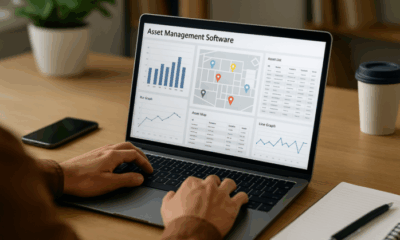Entrepreneurs
Here Are the 9 Steps to Starting Your Own Business After College

If the regular 9-to-5 workday is your worst nightmare, there is a way to avoid it. Many students prefer starting their own business instead of living in fear of being fired or going to the job they hate to earn money. Starting your career as an entrepreneur is not as hard as it may seem. I prepared nine steps that will guide every college student through this challenging but rewarding process.
Step 1: Get an Idea
You need to know exactly what to start when you want to start a business. An entrepreneur must have an idea. If you can’t even come up with an idea, what kind of business are we talking about? You don’t have to be innovative and come up with something unimaginable. You can take a concept that is already working, analyze it, find some drawbacks in it, or just improve it as you see it, and it will turn into a new business. It is easier to enter the developed market than to form it yourself. And the idea should not be global; you can start a micro-business or business with minimal investment.
Step 2: Analyze the Market
After coming up with a business idea, you need to analyze the market, find out if people even need your product or service. Evaluate the competition, identify the advantages and disadvantages of your competitors, and find out what makes you different from them. Compare prices, quality of service, assortment (if it’s a product business), and look for the best you can do. This is a must. Once you have evaluated the demand and supply, and you have realized that you can compete with existing companies, you can move on.
Step 3: Outlining and Planning
You can compile a business plan for yourself and describe all the expenses, promotion options, everything you need for a start, determine the prices for your goods and services, a break-even point, planned income, etc. You are writing it for yourself, not for a bank or investor, so use the form that is more convenient for you to work with in the future. You make this to keep less information in your head. This way, you won’t forget to do anything, and you can later check the completed tasks and goals.
The plan also prescribes all the costs that you will bear in the first place and try to stick to them. I would highly recommend you to exaggerate with these figures. Most importantly, do not look for ready-made business plans. They mention the mean values, which, in fact, is very different from reality.
Step 4: Investment
You have to invest in any type of business. You can start a business without any money, but it is a rare situation, and you have to wait a long time for the results. In the previous step in business planning, you had to calculate how much money you would need in the initial stages of your business. Take the amount and add at least 20% more to it. This is just in case. It is better when there is little money left than not enough, and you have to look for it in an emergency mode.
Step 5: Validate Your Idea
The first thing you need is a quick test. Develop a minimum viable product or a service, launch a small advertising campaign, and try to sell it. This will help you to study the demand in practice. You need to look at your plan, highlight the minimum things you need in order to start right away. Delay of the launch is one of the mistakes the beginner entrepreneurs make as they are continually trying to improve something. You don’t need to perfect it. You need to start as soon as possible to test the idea in action, to get the first sales and continue to develop with enthusiasm.
If the start does not give the first sales, it is necessary to revise the plan, the idea, and look for mistakes. This validation will also help you to spend less time, effort, and money in case of a failure. It would be more annoying to have been preparing everything for a year and then fail. It’s less frustrating to understand your mistakes right away while you still have not done much. Thus, you can make adjustments as you go along, and everything will start to work out!
Step 6: Make It Legal
You must not miss this step as every business should be legal and registered. This will save you a lot of trouble in the future. This is especially important if you’re planning on taking out loans or seeking investors – says Joe Sturgess, Head of Marketing at LegalDrop.
Step 7: Business Development
Once you have validated your idea, the plan has been adjusted, and sales have begun smoothly, you can develop your business and refine to perfection everything you wrote in the plan. Now you can improve the website, increase warehouses or offices, expand staff, etc. When your idea and business model has shown its efficiency, it is easier for you to set more global goals.
Besides, you have already received money from the first orders or sales and can reinvest it in the development. If there is not enough cash, then you can take loans and credits, because business brings money. If you don’t need much money, you can even use a credit card.
Step 8: Active Marketing
Once you have already felt the firm ground under your feet, improved your website, hired more employees, expanded your facilities, etc., you need to provide all of this with work. For this, you need aggressive advertising to the maximum. You need to use a lot of marketing opportunities. Look for customers on the Internet, do offline advertising, direct sales, etc.. The more advertising tools you use, the better the result. But be sure to capture the results and filter out ineffective advertising tools so as not to drain budgets to nothing.
Step 9: Scaling
Your business works well, brings money, you are constantly developing, everything is great! But there are also related directions or neighbouring cities. If your business model has successfully fired in your town, you can make offices in others.
As you can see, all you need to become an entrepreneur is an interesting validated business idea and plan. Any concept can turn into a successful business as long as it helps the customers solve their problems or cover their needs. Your age has nothing to do with the desire to change the world and help other people with new solutions.
Change Your Mindset
The Silent Skill That Makes People Respect You Instantly
What truly earns respect and why most people go about it the wrong way

Everybody craves respect but not everyone earns it. Some people believe that a title, years of experience, or a position of authority automatically entitles them to respect. (more…)
Entrepreneurs
The Essential Skills Every Entrepreneur Needs In 2026
Success in the digital age isn’t about luck. It’s about mastering the skills that separate dreamers from doers.

When I was 22 years old, I started my first side hustle as a ghostwriter. (more…)
Business
The Hidden Money Pit in Your Operations (and How to Use It)
See how smart asset management software is quietly saving businesses thousands in wasted time, stock, and maintenance.

Trimming unnecessary expenses and minimizing resources is a general practice in running a business effectively. Asset management software can help you achieve those goals. (more…)
Business
Thinking of Buying A Business? These 6 Sectors Quietly Produce the Best Deals
Before you buy your next venture, check out the sectors where successful businesses are changing hands every day.

All entrepreneurs have a desire to be the masters behind a successful venture. Buying an established business is a great choice for many. This provides instant access to an established market with existing infrastructure and clients. (more…)
-

 Personal Development4 weeks ago
Personal Development4 weeks agoThis Silent Habit Might Be Sabotaging Your Career
-

 Business4 weeks ago
Business4 weeks agoWhy Your E-Commerce Fulfilment Is Probably Broken (And How to Fix It)
-

 Shift Your Mindset3 weeks ago
Shift Your Mindset3 weeks ago11 E’s That Define Every Great Leader And Why Most People Miss Them
-

 Did You Know3 weeks ago
Did You Know3 weeks agoThe Success Patterns You Inherited (And Didn’t Notice)
-

 Business3 weeks ago
Business3 weeks agoThe Hidden Money Pit in Your Operations (and How to Use It)
-

 Entrepreneurs2 weeks ago
Entrepreneurs2 weeks agoThe Essential Skills Every Entrepreneur Needs In 2026
-

 Change Your Mindset2 weeks ago
Change Your Mindset2 weeks agoHow to Turn Your Mind Into Your Greatest Asset (Instead of Your Enemy)
-

 Change Your Mindset1 week ago
Change Your Mindset1 week agoThe Silent Skill That Makes People Respect You Instantly


























